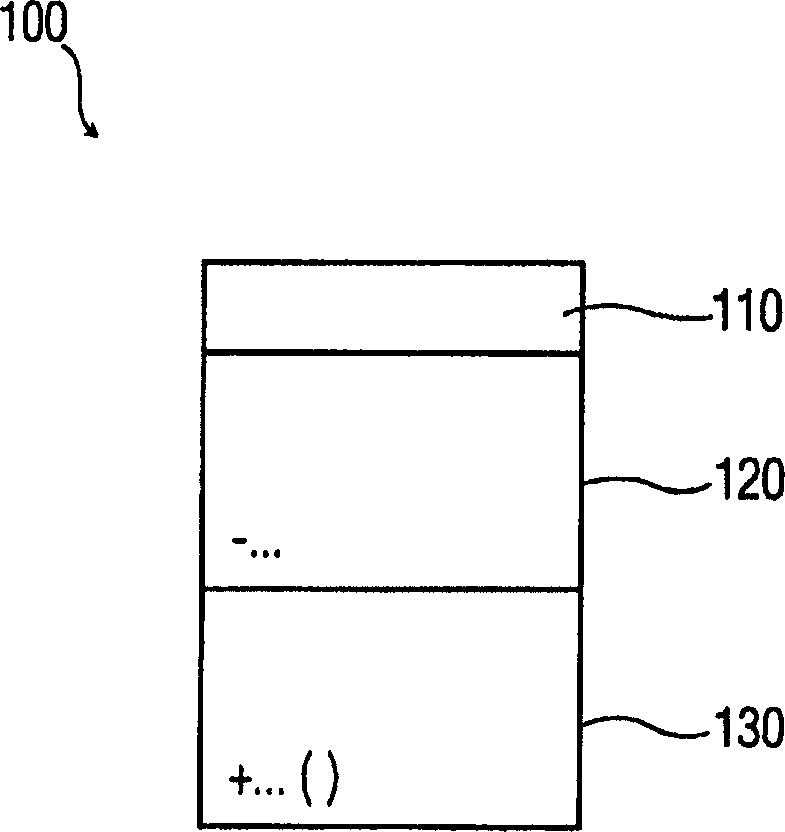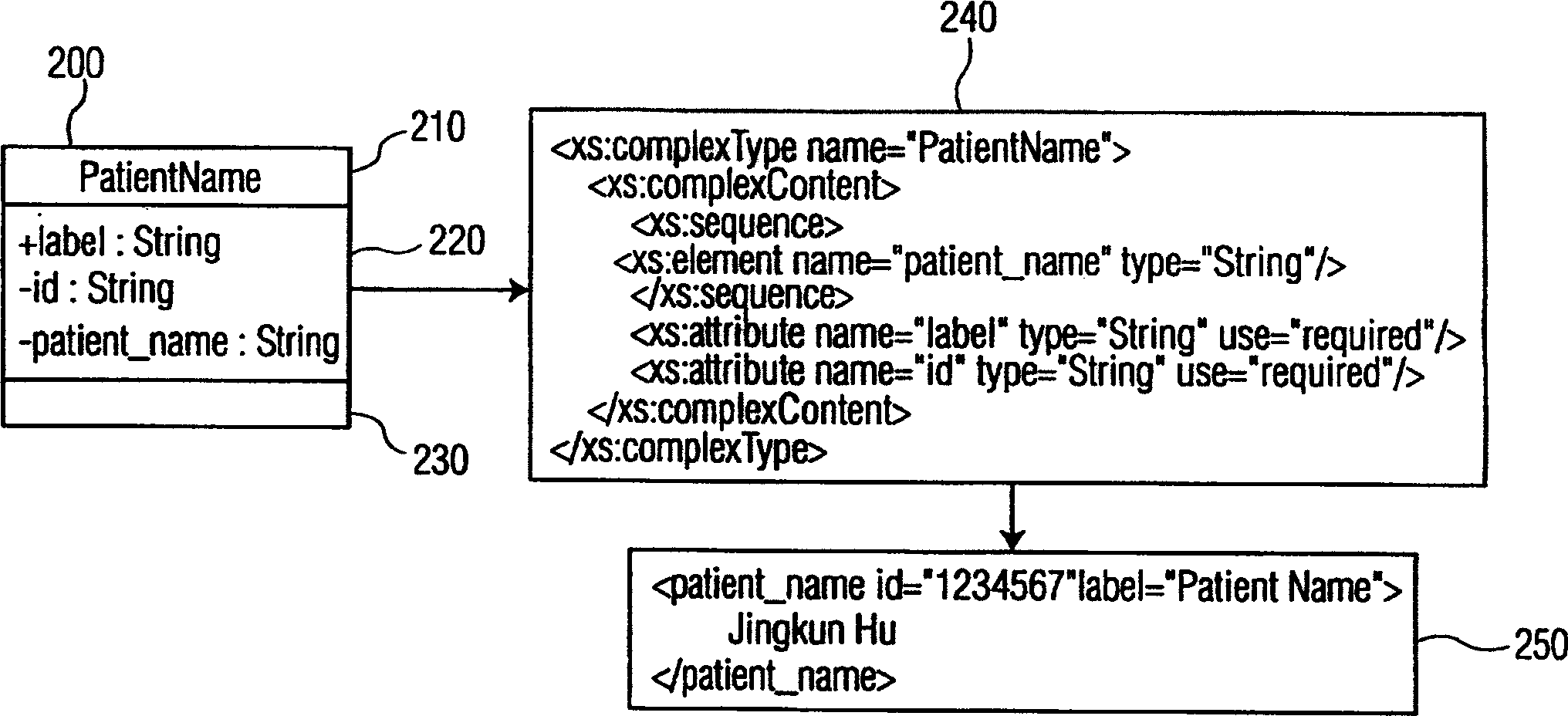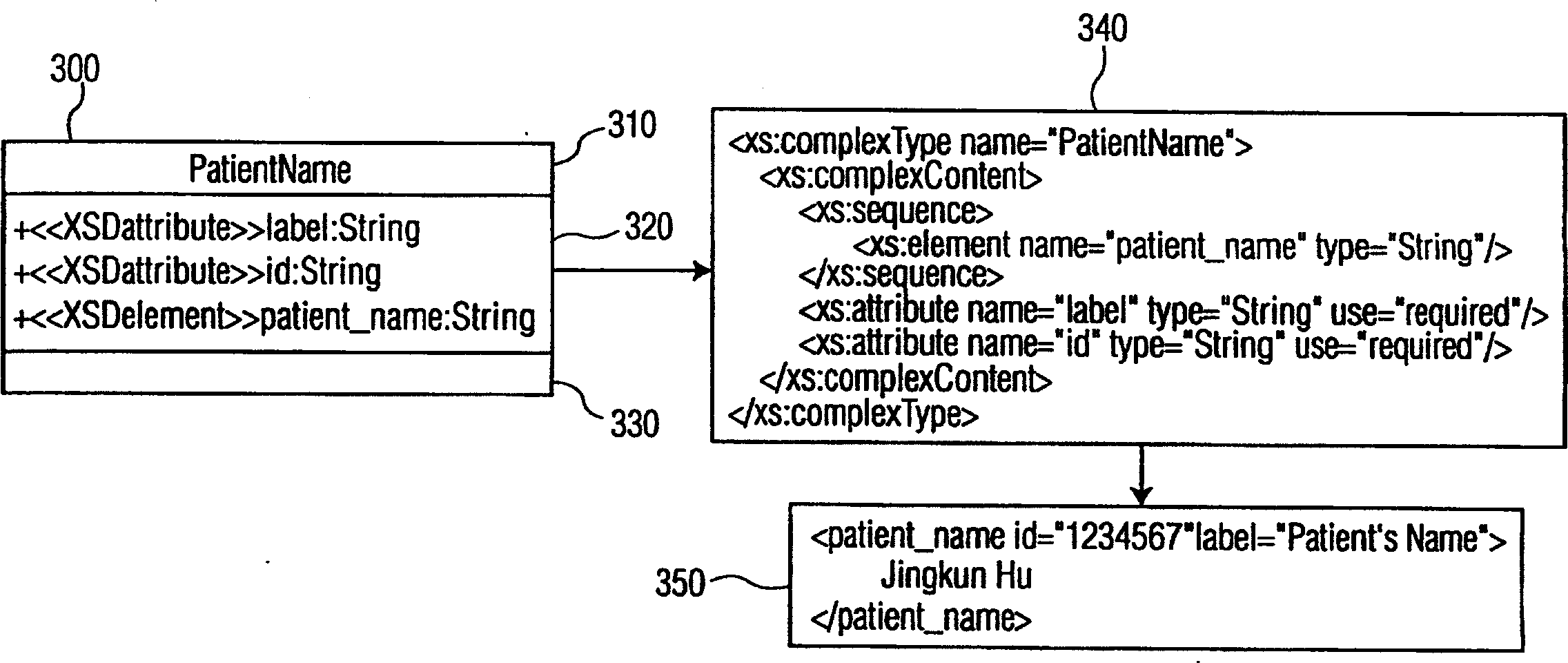Method and apparatus for modeling extensible markup language (XML) applications using the unified modeling language (UML)
An XML schema and model technology, applied in the field of modeling XML applications, can solve the problem of difficulty in distinguishing XML elements and attributes
- Summary
- Abstract
- Description
- Claims
- Application Information
AI Technical Summary
Problems solved by technology
Method used
Image
Examples
Embodiment Construction
[0019] As described below, the present invention extends the UML model to allow explicit representation of constant properties of classes in the UML model. Thus, the present invention provides methods and devices that allow for a more precise representation of XML documents or application objects. Specifically, the disclosed UML model distinguishes XML elements from XML attributes by inserting an additional constant attribute column for containing attributes that generally remain constant throughout all instances of an XML element type.
[0020] In UML, attributes are members / data variables of a class. These properties can be broken down into two categories: constant properties such as class identifiers and mutable properties that vary from object to object. Here, the attributes we mentioned are UML attributes and not XML attributes.
[0021] Building XML Application Models Using UML
[0022] A number of techniques have been provided or suggested for modeling XML applicatio...
PUM
 Login to View More
Login to View More Abstract
Description
Claims
Application Information
 Login to View More
Login to View More - R&D
- Intellectual Property
- Life Sciences
- Materials
- Tech Scout
- Unparalleled Data Quality
- Higher Quality Content
- 60% Fewer Hallucinations
Browse by: Latest US Patents, China's latest patents, Technical Efficacy Thesaurus, Application Domain, Technology Topic, Popular Technical Reports.
© 2025 PatSnap. All rights reserved.Legal|Privacy policy|Modern Slavery Act Transparency Statement|Sitemap|About US| Contact US: help@patsnap.com



